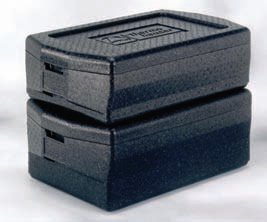Food Safety: (Temperature Control)
Regulations 1995
The Food Safety (Temperature Control) Regulations 1995 came into force in the UK on 15 September 1995 to replace and simplify existing legislation. The list of 'relevant' foods specified in old regulations have been removed and there is now a general requirement to hold any food likely to support the growth of micro-organisms or toxins under temperature control.
Please note that any activity covered by the following legislation is exempt from the Food Safety (Temperature Control) Regulations 1995.
The Meat Products (Hygiene) Regulations 1994, as amended
The Fresh Meat (Hygiene and Inspection) Regulations 1995, as amended
The Dairy Products (Hygiene) Regulations 1995, as amended
The Poultry Meat, Farmed Game Bird and Rabbit Meat (Hygiene and Inspection) Regulations 1995
The Fresh Meat (Hygiene and Inspection) Regulations 1995, as amended
The Dairy Products (Hygiene) Regulations 1995, as amended
The Poultry Meat, Farmed Game Bird and Rabbit Meat (Hygiene and Inspection) Regulations 1995
The following are legal requirements in the UK and must be complied with
1.1 Chill Holding Requirement
Any food which is likely to support the growth of pathogenic micro-organisms or the formation of toxins must not be kept above 8°C.
1.2 Exemptions
The chill holding requirements do not apply to:
- food which:
- has been cooked or re-heated;
- is for service or on display for sale; and
- needs to be kept hot to control the growth of micro-organisms or toxins.
- food which can be kept safely at ambient temperatures;
- food which has been subjected to a process intended to prevent the growth of micro-organisms or toxins (eg canning, dehydration) and placed in a hermetically sealed container. The exemption ceases to apply once the container is opened.
- food which must be matured or ripened at ambient temperatures but only until the maturing process is completed.
- raw food intended for further processing (eg cooking) which will render the food fit for human consumption.
1.3 Manufacturer's Variation
Some foods may be kept at higher temperatures for a specified shelf-life if recommended by the manufacturer or processor, in writing or by suitable labelling. However, the manufacturer must support the recommendation by a well founded scientific assessment of food safety.
1.4 Cooling
Food which must be kept at or below 8°C must be cooled to that temperature as quickly as possible after the final preparation.
1.5 Tolerance Periods
Food may be kept outside temperature control in the following circumstances:
- For service or on display for sale for less than four hours;
- to or from a vehicle being used for food transport to transfer food from or to another premises where it will be kept at 8°C;
- unavoidable reasons, such as:
- to allow the practicalities of preparation and handling;
- defrosting cycle;
- temporary breakdown.
For b) and c), food may be kept above 8°C for a limited period which must not compromise food safety.
2.1 Hot Holding Requirement
Food which:
- has been cooked or re-heated;
- is for service or on display for sale;
- needs to be kept hot to control the growth of pathogenic micro-organisms or the formation of toxins. must be kept at or above temperature of 63°C.
2.2 Variations/Exemptions
Food may be kept at a lower temperature if a well-founded scientific assessment concludes that there is no risk to health. Food may also be below 63°C if kept for service or on display for sale for less than two hours.
3.1 General Requirements
No food stuffs, including raw materials, may be kept at temperatures which would create a health risk.
Limited periods outside controlled temperatures are permitted to allow for the practicalities of transporting, handling and preparing food.
Foods supplied by mail order, which are likely to support pathogenic micro-organisms or toxins, must not be carried at temperatures likely to cause a risk to health.
The following points are recommendations consistent with good practice
- The new regulations require food to be kept at or below 8°C. As the air temperatures of refrigerators are often a few degrees lower than products, it is important to keep fridge temperatures at or lower than 5-6°C to ensure that the temperature of the food does not exceed 8°C.
- Domestic refrigerators are often unable to maintain the required temperatures and commercial equipment should be used wherever possible.
- Cold food displayed for four hours must not be refrigerated for later display. Any food kept outside temperature control for the specified periods (four hours for cold and two hours for hot) must be disposed of in a suitable manner.
- Blast chillers are extremely useful for cooling large amounts of high risk foods to ensure that they reach 8°C within the shortest possible time.
- A temperature monitoring and recording system is highly recommended to ensure that all equipment is working efficiently and food is kept at safe temperatures.
- A maintenance contract with refrigeration engineers is recommended.
last updated 12 March 2007



